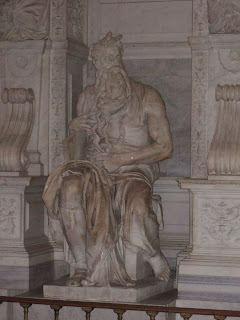Atheism and religious art

Brian Crowe’s prohibitively erudite blog, Burke’s Corner, picks up a story concerning militant atheist Richard Dawkins’ attitude to Christmas. Brian detects a contradiction between Dawkins’ strident anti-Christian polemics and his enjoyment of explicitly religious Christmas traditions and allusions.
It transpires that Dawkins is an unlikely participant in the singing of carols and acknowledges more generally that a lack of basic knowledge of biblical literature diminishes full appreciation of our culture. There is certainly a fundamental irony in so visceral an opponent of Christianity appreciating and indeed participating in singing songs which celebrate the very narrative which he feels has inflicted so much damage on society.
Brian quotes Theo Hobson writing in the Guardian’s Comment Is Free:
"it won't do to call carols beautiful but meaningless. For their beauty is obviously related to their content. Their power derives from the particular story they tell: the birth of a baby which is also the arrival of total hope for the world, the triumph of good over evil, light over darkness. The beauty of this myth exceeds aesthetics. For its beauty is not neutral but is tied up in an assertion of value".
This is certainly a valid point, but if we lay aside the particularly vociferous and perhaps somewhat vicious character of Dawkins’ disapproval of religion, is it fair to say that a rejection of belief prohibits someone from appreciating works of art which have derived from that belief? I would argue that it does not. Likewise, I would assert that it is even possible to appreciate the beauty of the work of art and still contend that the belief which inspired it is damaging, without in any way seeking to divorce the beauty from the belief.
It is an evident truism that purposeful conviction provides power to any work of art. Religious faith has proved a particular inspiration and has provided us with a countless number of treasures. In submitting to the beauty of this art we are intrinsically acknowledging the importance of faith in inspiring its creation, but we are not in any way necessarily endorsing that belief ourselves. It is possible that sharing that religious belief heightens the experience of appreciating the art, but that is a purely subjective factor. I didn’t feel as moved by seeing Michelangelo’s Moses in St Peter’s in Chains church is Rome as my mother who is a devout Christian for example. That may or may not be down to differences in faith and belief; it could equally be ascribed to different light, tiredness, museum fatigue, hot weather or any number of other factors.
I find the notion of Dawkins belting out Christmas carols bizarre. Participation seems to me to suggest an entirely different level of engagement with the content of a song, than merely enjoying listening to it. I do not however believe that criticising a faith which has inspired a work of art makes one a hypocrite to appreciate that work.
Comments